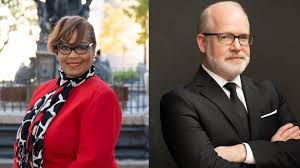By Richard Florida on Atlantic Cities:
Tolerance—the third of my 3Ts of economic development—provides a critical source of economic advantage that works alongside Technology and Talent. Places that are open to new ideas attract creative people from around the globe, broadening both their technology and talent capabilities, gaining a substantial economic edge.
 (Click the map for a larger image)
(Click the map for a larger image)
The map above shows how metros across the U.S. score on the Tolerance Index, as updated for The Rise of the Creative Class, Revisited. The chart below shows the top 20 metros. Developed by my Martin Prosperity Institute colleague Kevin Stolarick, it ranks U.S. metros according to three key variables—the share of immigrants or foreign-born residents, the Gay Index (the concentration of gays and lesbians), and the Integration Index, which tracks the level of segregation between ethnic and racial groups.
| Metro | Tolerance Index Score | |
| 1. | San Diego-Carlsbad-San Marcos, CA | .751 |
| 2. | Napa, CA | .747 |
| 3. | Santa Rosa-Petaluma, CA | .739 |
| 4. | Santa Cruz-Watsonville, CA | .738 |
| 5. | Santa Fe, NM | .726 |
| 6. | Ithaca, NY | .723 |
| 7. | Oxnard-Thousand Oaks-Ventura, CA | .708 |
| 8. | Cape Coral-Fort Myers, FL | .702 |
| 9. | Boulder, CO | .701 |
| 10. | Ann Arbor, MI | .693 |
| 11. | Miami-Fort Lauderdale-Miami Beach, FL | .692 |
| 12. | Greeley, CO | .691 |
| 13. | Trenton-Ewing, NJ | .690 |
| 14. | Fresno, CA | .687 |
| 15. | Las Vegas-Paradise, NV | .686 |
| 16. | Portland-Vancouver-Beaverton, OR-WA | .684 |
| 17. | San Francisco-Oakland-Fremont, CA | .683 |
| 18. | Worcester, MA | .680 |
| 19. | Carson City, NV | .679 |
| 20. | Boston-Cambridge-Quincy, MA-NH | .678 |
Even more than its natural resources and native ingenuity, what has stood at the heart and soul of U.S. prosperity historically has been its openness to hard working, ambitious, and talented immigrants of all stripes—doctors, engineers, and uneducated laborers alike. Roughly half of Silicon Valley start-ups have a foreign-born person among their founding team, according to several recent studies. Careful studies by the economist Giovanni Peri of the University of California at Davis have found that immigrants add rather than detract from American prosperity, for the simple reason that “the skill composition of immigrants is complementary to that of natives.” At the low-skill end of the spectrum, immigrants specialize in “manual intensive tasks such as cooking, driving, and building” that their American counterparts tend not to do. At the high-skill end of the spectrum, immigrants bring scientific, technical, and entrepreneurial skills that are in short supply and vital for America’s innovative and entrepreneurial engine. A “more multicultural urban environment,” Peri concludes, “makes U.S.-born citizens more productive.”
Openness to gays and lesbians similarly reflects an ecosystem that is open to new people and new ideas. It’s amazing how consistently people have misconstrued what my colleagues and I have had to say about the connection between gays and economic growth. They miss the point. A strong and vibrant gay community is a solid leading indicator of a place that is open to many different kinds of people. Ronald Inglehart, who has studied the relationship between culture and economic growth for some four decades, has noted that the lack of societal acceptance of gays is the most significant remaining bastion of intolerance and discrimination around the world. Accordingly, communities that have long been more accepting and open to gay people have an underlying ecosystem which is also more likely to be accepting of new ideas and different types of people, including the eggheads and eccentrics who invent new things and start new enterprises. As Bill Bishop put it, “where gay households abound, geeks follow.”
Tolerance affects economic growth by shaping the flow of technology and talent. Most economists tend to see technology and talent as fixed stocks, like raw materials or natural resources, but the reality is that they are flows. Unlike seams of coal or natural harbors, talented people are mobile factors—they can and do move around. Of course talented people come from different racial and ethnic backgrounds – a substantial share of Silicon Valley startups were founded by people who hail originally from outside the United States – as well as different sexual orientations.The fact that some places are better attracting this flow of talent is associated with how open to different kinds of people they are.
Economists frequently note the importance of industries having low entry barriers, so that new firms can easily enter and keep the industry vital. Similarly, a place can benefit from low entry barriers for people—where newcomers from different backgrounds are accepted quickly into all sorts of social and economic arrangements. All else being equal, such communities have an advantage in attracting and retaining the diverse and different types of people who power innovation and growth.
Tolerance – and openness to diversity and inclusiveness – is not an afterthought or something that happens when communities get rich. It is a key element of the new economic development equation.
This post is an abridged and revised excerpt of material from The Rise of the Creative Class, Revisited, out this month from Basic Books.



